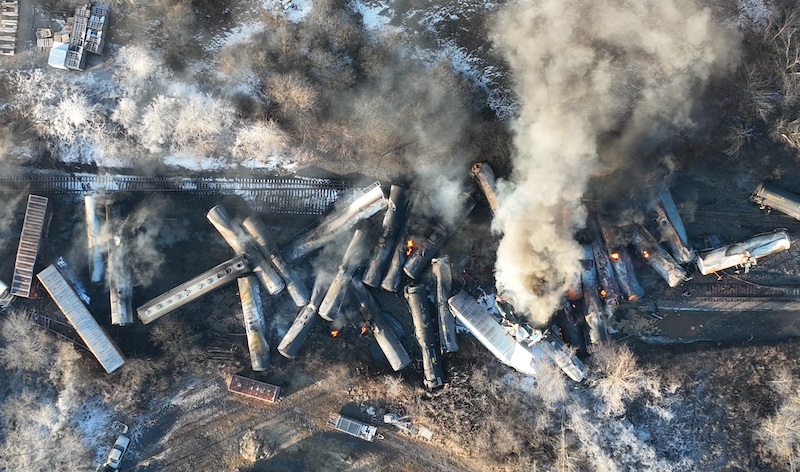By Justin Franz
Norfolk Southern announced late Thursday that would inspect nearly 1,000 wayside heat detectors on its 19,500-mile system after federal investigators announced that a hot bearing most likely caused the explosive derailment in East Palestine, Ohio, this month.
On Thursday, federal investigators released their preliminary findings in the examination of the derailment of train 32N. The report found that the temperature of the bearing in question had been slowly increasing for 30 miles before reaching East Palestine, but that when it reached NS’ threshold to actually stop and inspect the train, it was too late.
In response, the railroad said that its employees followed all of NS’ rules and that it recently inspected the detectors in question to confirm that they were operating properly. All defect detectors are supposed to be inspected every 30 days, but now NS is going to look at all of them across the system to ensure they are operating properly.
According to the NTSB’s preliminary report, the bearing on the twenty-third car of 32N had a recorded temperature of 38 degrees above the ambient temperature when it passed the first detector on February 3. When it passed the next detector at Milepost 69.01, it had increased to 103 degrees. Finally, at Milepost 49.81, on the east side of East Palestine, the recorded temperature was 253 degrees above ambient. That triggered an audible alarm over the radio informing the crew to stop the train. The engineer began to slow the train, but by then it was too late.
NS has established the following hot bearing detector alarm thresholds and criteria for bearings, according to the NTSB.
- Between 170°F and 200°F, warm bearing (non-critical); stop and inspect
- A difference between bearings on the same axle greater than or equal to 115°F (non-critical); stop and inspect
- Greater than 200°F (critical); set out railcar.
On Thursday, NS officials wrote that although the temperature of the bearing was increasing, the detectors had worked properly. They also wrote that ”the company’s wayside detectors on its network trigger an alarm at a temperature threshold that is among the lowest in the rail industry.”
But a railroader at another Class I refutes NS’ claim that its threshold is among the lowest in the industry. The locomotive engineer, who agreed to speak on Railfan & Railroad on background, said that at his company the car would have been set out when it hit 90 degrees above ambient. That means the car on 32N would have been set out after the second detector when the temperature had increased to 103 degrees.



